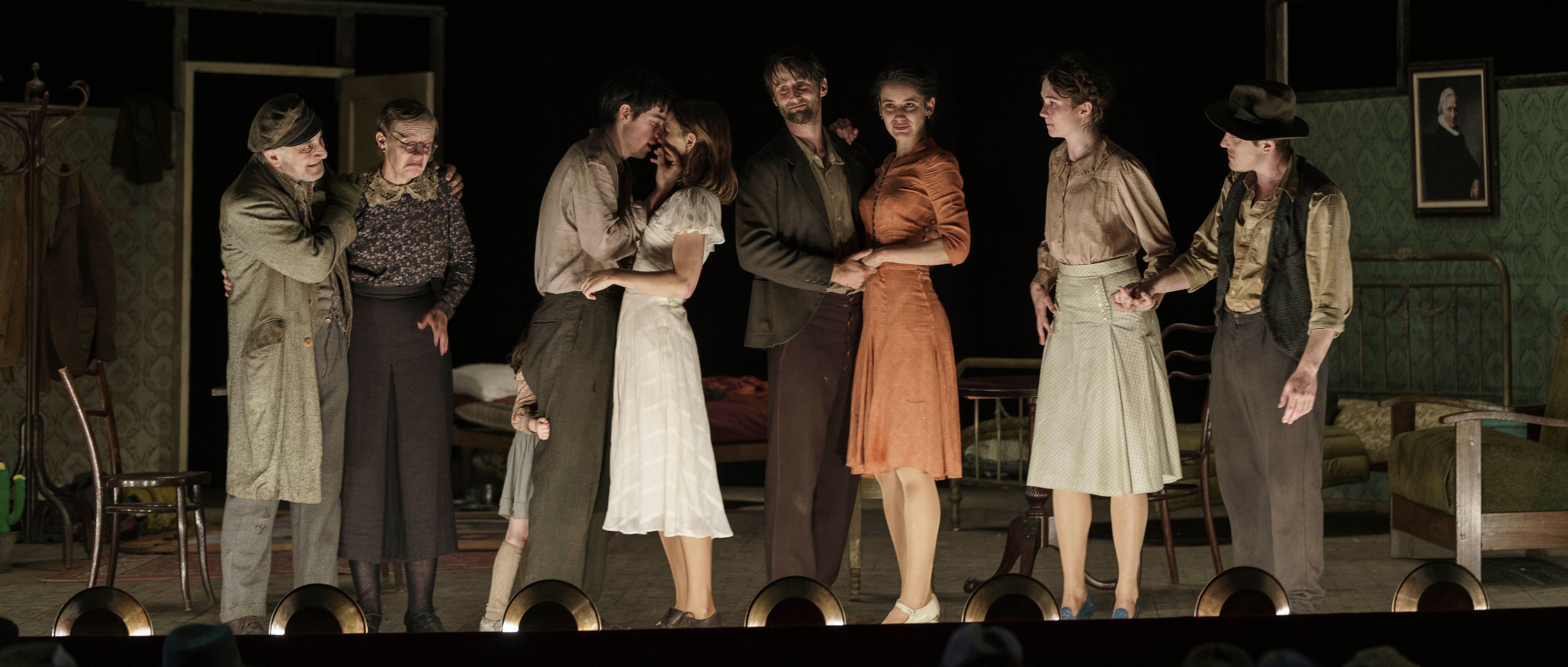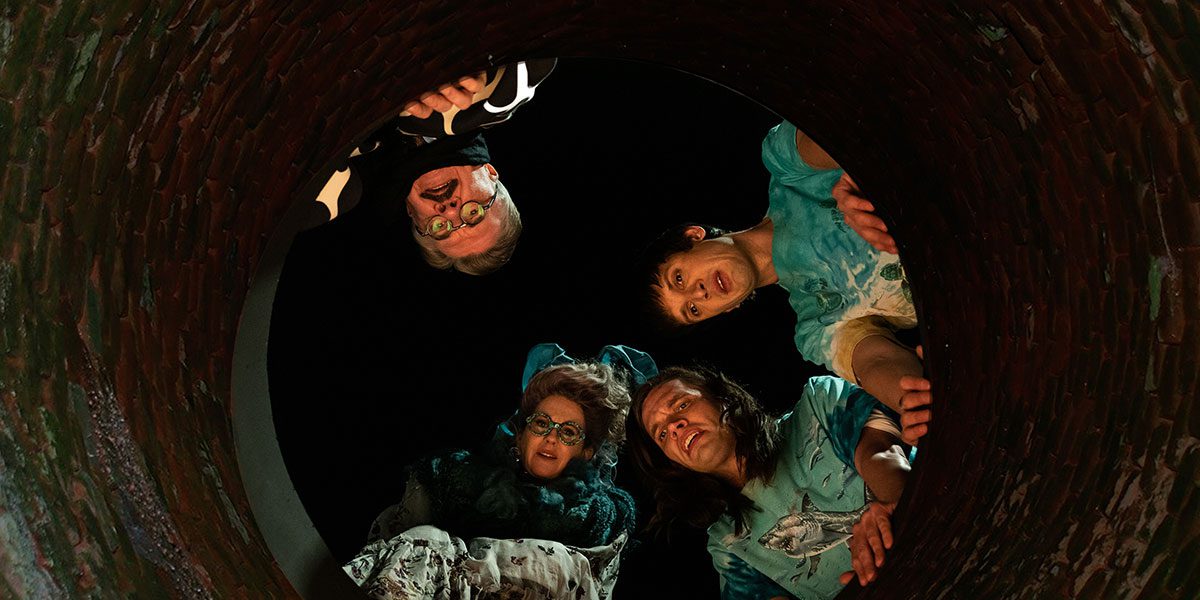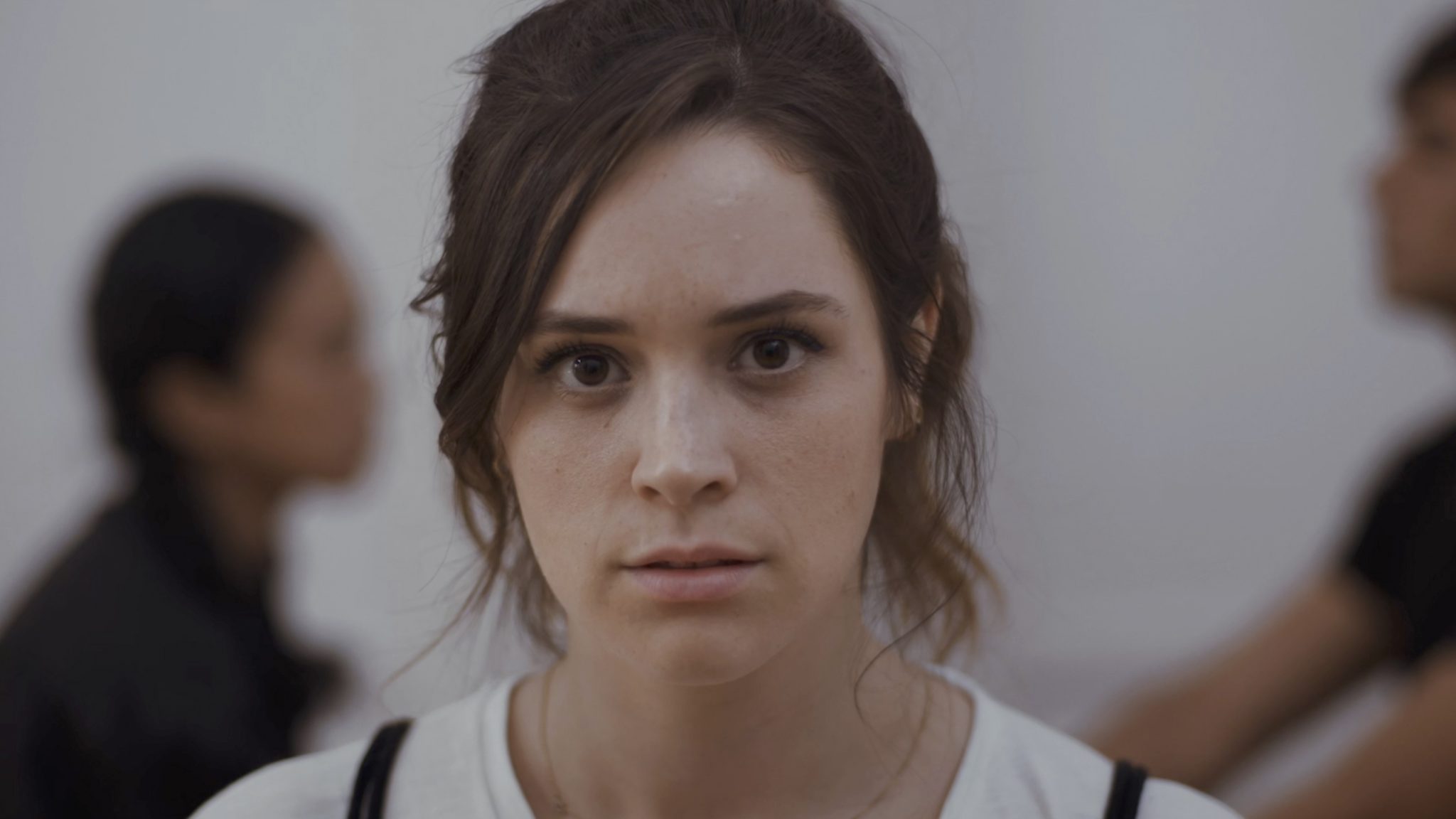The title card that opens Rodrigo Cortés’s Love Gets a Room, gives us the setting of the story (Warsaw in January 1942) and the context of the Warsaw ghetto filled with 400,000 Jews with suffering and inevitable death everywhere. The title card ends with the statement, “Or they try to remember they are still alive.” The co-existence of life and death is the tension that must be struggled with by the characters in this story.
The film shows us a group of actors who are putting on a play in the ghetto. (In reality, Jerzy Jurandot wrote a play with this title that played for several months before the deportation. The play within a play is that play.) One of those actors is Stefcia (Clara Rugaaard). Stefcia is the focal point of a love triangle both onstage and off. Just before the curtain, another actor, Edmund (Ferdia Walsh-Peelo), takes her aside and tells her he’s bribed a soldier to let them escape. They must leave right after the play. But although Edmund is in love with Stefcia, she loves Patryk (Mark Ryder) and cares deeply about his young sister.

The story plays out in real time, alternating between the play onstage and the turmoil of the situation being played out backstage. Stefcia wants Patryk and his sister included, but Edmund won’t agree. Out of love, Patryk wants Stefcia to go with Edmund so she will live. Stefcia wants her life to be with the man she loves. Back and forth the discussions go between scenes. The tensions increase exponentially when a German soldier enters the theater and takes a seat in the front row.
At one level, this story is a love story. A great deal of the conversations are about loving and being loved. A cynical cast member tells Stefcia, “What matters here, child, is being loved, not loving.” Stefcia doesn’t understand why Patryk won’t fight for her. Edmund doesn’t understand why this showing of love doesn’t win Stefcia’s heart. But for Stefcia, being loved is not enough.

But at a deeper level, this is an existential meeting of life and death. The situation in the ghetto is filled with death, to the extent that when Patryk tells Stefcia that he wants her to live, she replies “I’m already dead.” Perhaps the most interesting look at this is when one character asks Stefcia if she believes in life after death. She replies, “I’d settle for one before.”
The constant presence of death (emphasized in the film by the presence of a German soldier) has shaped the lives of these actors (and all those in the ghetto) in such a way that there seems no escape. When Edmund acts to create an escape, the possibility of life is hard to grasp. And what that life will mean to each person involved. The decision of the best possible outcome seems impossible to make. How does one live and love in such a world? That is the question that Stefcia (and the viewer) must wrestle with throughout the story.

Love Gets a Room is in select theaters and coming to VOD June 30.
Photos courtesy of Buffalo 8.
FilmReviewsVOD



